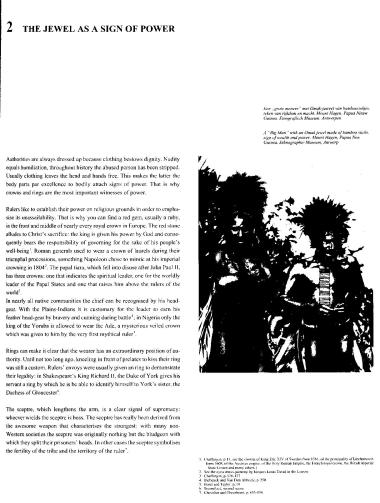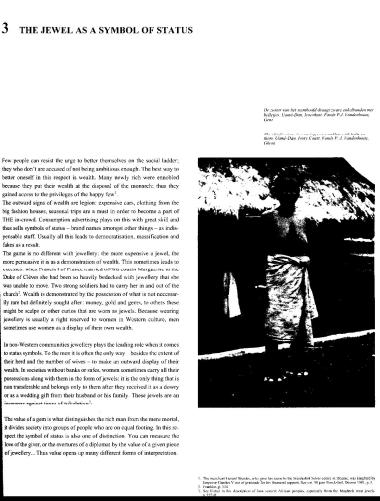Macht/Status
This page deals about jewellery as a sign of power/status. It gives examples of other interpetations of ‘jewellery as a sign of power’, jewellery of Kings and Queens, Signs of power in other cultures, and a lot more.
Graffiti Amsterdam, an other interpretation. The makers look at graffiti as a form of jewellery. The graffiti is as a form of status.
____________________________________________________
- J. Walgrave, ed.;Sieraad Symbool Signaal, Koninging Fabiolazaal, Antwerpen, 1995, p91/97.

The jewel as a sign of power
Authorities are always dressed up because clothing bestows dignity? Nudity equals humiliation throughout history the abused person has been stripped. Usually clothing leaves the head and hands free. This makes the latter the body parts par excellence to bodily attach signs of power. That is why crowns and rings are the most important witnesses of power.
Rulers like to establish their power of religious grounds in order to emphasise its unassailability. That is why you can find a red gem, usually a ruby, in the front and middle of nearly every royal crown in Europe. The red stone alludes to Christ’s sacrifice: the kin is given his power by God and consequently bears the responsibility of governing for the sake of his people’s well-being. Roman general used to wear a crown of laurels during their triumphal processions, something napoleon chose to mimic at his imperial crowning in 1804. The papal tiara, which fell into disuse after John Paul II , has three crowns: one that indicates the spiritual leader, one for the worldly leader of the Papal States and one that raises him above the rulers of the world.
In nearly all native communities the chief can be recognised by his headgear. With the Plains-Indians it is customary for the leader to earn his feather head-gear by bravery and cunning during battle; in Nigeria only the king of the Yoruba is allowed to wear the Ade, a mysterious veiled crown which was given to him by the very first mythical ruler.
Rings can make it clear that the wearer has an extraordinary position of authority. Until not too long ago, kneeling in front of prelates to kiss their ring was still accustom. Rulers’ envoys were usually given an ring to demonstrate their legality: in Shakespeare’s King Richard II, the Duke of York gives his servant a ring by which he is be able to indentify himself to York’ Sister, the Duchess of Gloucester.
The sceptre, which lengthens the arm, is a clear signal of supremacy: whoever wields the sceptre is boss. The sceptre has really been derived from the awesome weapon that characterises the strongest; with many non-Western societies the sceptre was originally nothing but the bludgeon with which they split their prisoners’ heads. In other cases the sceptre symbolises the fertility of the tribe and the territory of the ruler.
The jewel as a symbol of status
Few people can resist the urge to better themselves on the social ladder; the who don’t are enough. The best way to better oneself in this respect is wealth. Manu newly rich were ennobled because they put their wealth at the disposal of the monarch; thus they gained access to the privileges of the happy few.
The outward signs of wealth are legion; expensive cars, clothing from the big fashion houses, seasonal trips are a must in order to become a part of THE in-crowd. Consumption advertising pays on this with great skill an thus sells symbols of status – brand names amongst other things – as indispensable stuff. Usually all this leads to democratisation, massification and fakes as a result.
The game is no different with jewellery: the more expensive a jewel, the more persuasive it is as a demonstration of wealth. This sometimes leads to excesses: when Francis I of France married off his cousin Marguerite to the Duke of Clèves she had been so heavily bedecked with jewellery that she was unable to move. Two strong soldiers had to carry her in and out of the church. Wealth is demonstrated by the possession of what is not necessarily rare but definitely sought after: money, gold and gems, to others these might be scalps or other curios that are worn as jewels. Because wearing jewellery is usually a right reserved to women in Western culture, men sometimes use women as a display of their own wealth.
In non-Western communities jewellery plays the leading role when it comes to status symbols. To the men it is often the only way – besides the extent of their herd and the number of wives – to make an outward display of their wealth. In societies without banks or safes, women sometimes carry all their possessions along with them in the form of jewels: it is the only thing that is non transferable and belongs only to them after they receives it as a dowry or as a wedding gift from their husband or his family. These jewels are an insurance against times of tribulation.
The value of a gem is what distinguishes the rich man form the mere mortal, it divides society into groups of people who are on equal footing. In this respect the symbol of status is also one of distinction You can measure the love of the giver, or the overtures of a diplomat by the value of a given piece of jewellery … Thus value opens up many different forms of interpretation
___________________________________________________________
- examples of diferent Regalia
http://www.hethuisvanoranje.nl/17%20Koninklijke%20Collecties/foto’s/Russische%20Regalia.jpg
http://www.wisdomoftheelders.org/prog301/images/youth_regalia.jpg


_____________________________________________________________
-
Jewels as sign of power/status are also a form of comunication. They give us information about the place in society. They have to impress us.
Queen Elizebeth I, she always wore a lot of jewels, to impress. England has a big collection of crown jewels.
____________________________________________________________
- A list of jewels as a sign of power:
Crown, scepter, ring, feather, hunthing troffee, …
-
A list of jewels (/materials) as a sign of Status:
Diamnt, gold, pearls, tiara, …
You have to see that it is very expenciece, The combination of a lot of jewels showed the viewer the status of the weare. Now people Power and Status isn’t one of the main reasons to wear jewellery.
The political side of jewellery is rather a tradition.
____________________________________________________________
A site that gives a lot of information about jewellery as a sign of power.
> Ga naar objets trouvés







november 1, 2009 bij 11:56 am
[…] Macht/Status […]